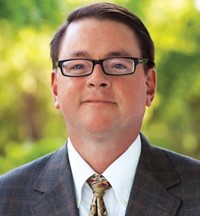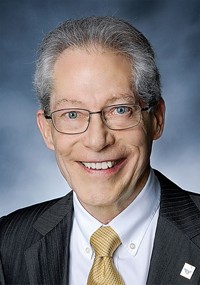Advertisement
Grab your lab coat. Let's get started
Welcome!
Welcome!
Create an account below to get 6 C&EN articles per month, receive newsletters and more - all free.
It seems this is your first time logging in online. Please enter the following information to continue.
As an ACS member you automatically get access to this site. All we need is few more details to create your reading experience.
Not you? Sign in with a different account.
Not you? Sign in with a different account.
ERROR 1
ERROR 1
ERROR 2
ERROR 2
ERROR 2
ERROR 2
ERROR 2
Password and Confirm password must match.
If you have an ACS member number, please enter it here so we can link this account to your membership. (optional)
ERROR 2
ACS values your privacy. By submitting your information, you are gaining access to C&EN and subscribing to our weekly newsletter. We use the information you provide to make your reading experience better, and we will never sell your data to third party members.
Policy
New Legal Liability Insurance Plan For Chemical Educators
by William H. (Jack) Breazeale, Chair, Board Of Trustees, Group Insurance Plans For ACS Members
August 31, 2015
| A version of this story appeared in
Volume 93, Issue 34
As a result of serious accidents at chemistry departments, particularly in higher education, I have been approached repeatedly by members in academia looking for protection from liability should an accident occur in their classrooms or laboratories. As a chemical educator and safety consultant, I have made the availability of a new liability insurance plan for chemical educators one of my major goals since becoming a member of the board of trustees.
No longer do faculty and others employed in academia feel sure that they are covered by their employer’s liability insurance should an incident occur. After a careful analysis and search for a plan that would serve the unique needs of chemistry educator professionals, I am pleased to announce the availability of Chemical Educators Legal Liability Insurance. This is an entirely new program as part of the offerings of the American Chemical Society Member Insurance Program (MIP).
The board of trustees (BOT) for Group Insurance Plans for ACS Members is continually working to enhance MIP’s portfolio of insurance plans and financial services to best serve members. As we reviewed the insurance marketplace for educators’ liability insurance plans, we found that they typically contain pollution hazard and bodily injury and property damage exclusions that render those plans virtually useless for the unique risks faced by chemical educators.
For instance, one well-established policy we reviewed noted that it does not apply to injury or damage arising out of any “pollution hazard,” which it defined as “an actual exposure or threat of exposure to the corrosive, toxic, or other harmful properties of any solid, liquid, gaseous, or thermal pollutants, contaminants, irritants, or toxic substances, including smoke, vapors, soot, fumes, acids or alkalis, and waste materials.” Clearly, a plan that would meet the needs of ACS members employed in academia would need to be developed from the ground up.
BOT conducted an extensive survey of 12,500 academic members to determine interest in developing a niche liability plan for chemical educators. The most important features desired by members were coverage for laboratory accidents, chemical exposures, and bodily injury and property damage. In 2014, we identified a Lloyd’s of London syndicate, Ark, which agreed to develop and underwrite a plan that covers the risks ACS members need.
Ark worked with BOT and our program administrator to develop the policy language. Although we were unable to remove all exclusions regarding chemicals (for example, lead and asbestos), this plan goes much further than any other educators’ liability plan we reviewed in protecting chemical scientists. The policy specifically includes coverage for “pollution” and covers bodily injury and property damage. It also includes many other features found in commonly available educators’ liability plans, such as wrongful employment practices, sexual harassment, and administrative proceedings.
The plan carries a limit of liability of $1 million, with sublimits for contingent bodily injury and property damage, pollution, sexual molestation, employment practices, and intellectual property. It includes a four-tier rate scale based on particular exposures. Applicants identify their employment responsibilities, and a selected rate tier will apply to them. Those with the least risk pay $250 annually for coverage, and the highest rate is set at $550, based on your selected risk exposure. The final risk tier will be determined by the insurer based on information supplied.
We all know that ACS membership gives us access to world-class technical benefits. I urge you to not overlook the personal value of the other, nontechnical member-only benefits from your society. MIP exists to help members reach their long-term professional and financial goals, which are certainly equal to, or even more pressing than, our technical needs.
Did you know that we offer professional liability plans designed specifically for chemical consultants? Did you know that, owing to the good claims experience and longevity of chemists, we have reduced the rates for term life insurance twice in the time I have been on BOT and plan to do so again next year? Did you know that we have three types of life insurance to fit the needs of our diverse membership? Or that ACS and the American Association of Chemistry Teachers (AACT) members may also apply for health, auto, home, and renters’ insurance from nationally known insurance companies?
BOT carefully reviews the insurance plans before they are offered to members and scrutinizes the companies behind them. With nearly 50 years of continued success, the program has proven to be a reliable and valuable member benefit. We hope you will take advantage of it!
The new Chemical Educators Legal Liability Insurance plan is available to members of ACS, its subsidiary AACT, and our sister society the American Institute of Chemical Engineers (AIChE). For more details, go online at www.acs.org/insurance, or call the plan administrator at (888) 437-7008.
Views expressed on this page are those of the author and not necessarily those of ACS.






Join the conversation
Contact the reporter
Submit a Letter to the Editor for publication
Engage with us on Twitter